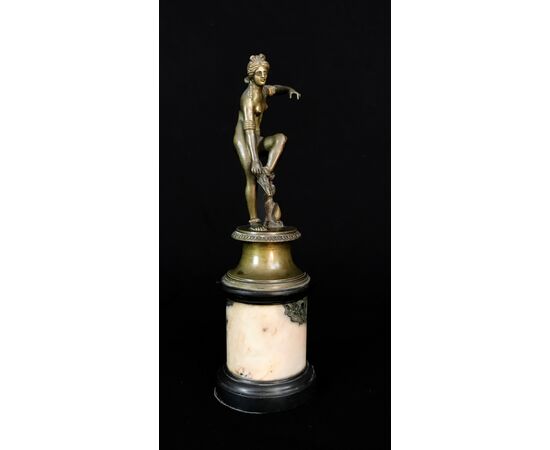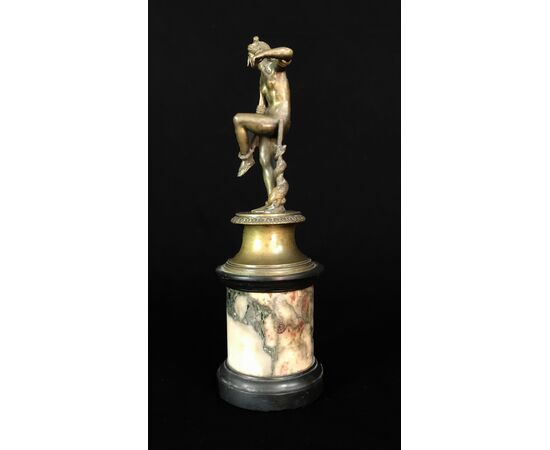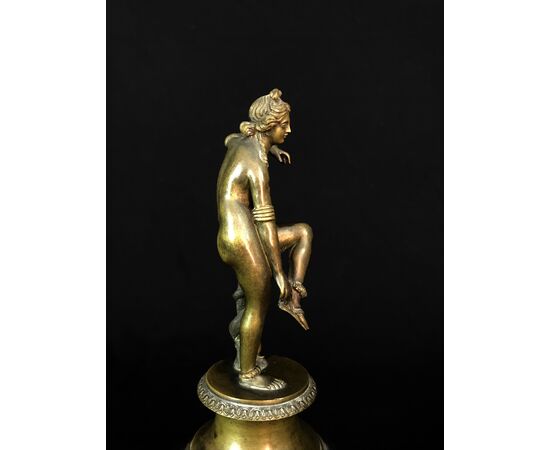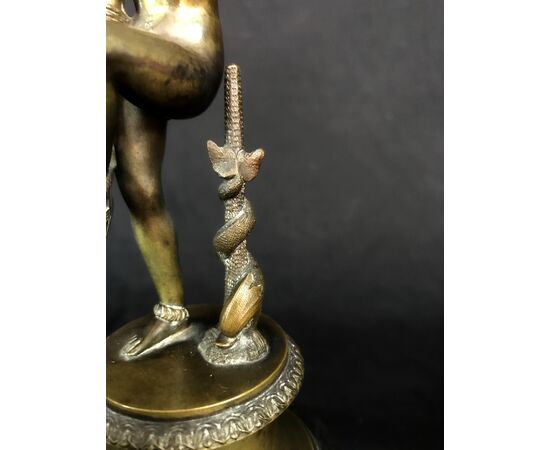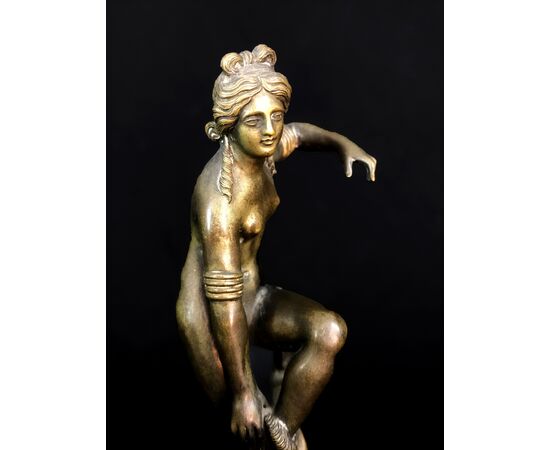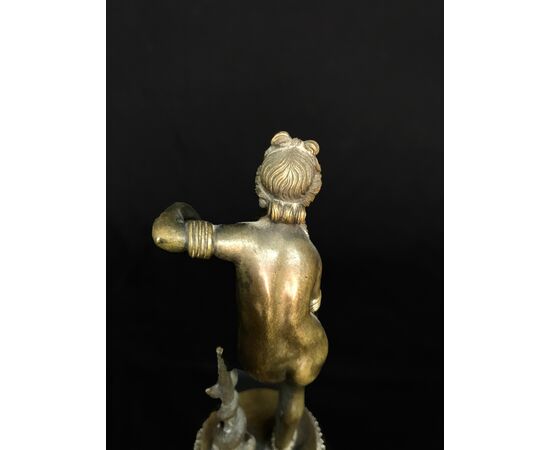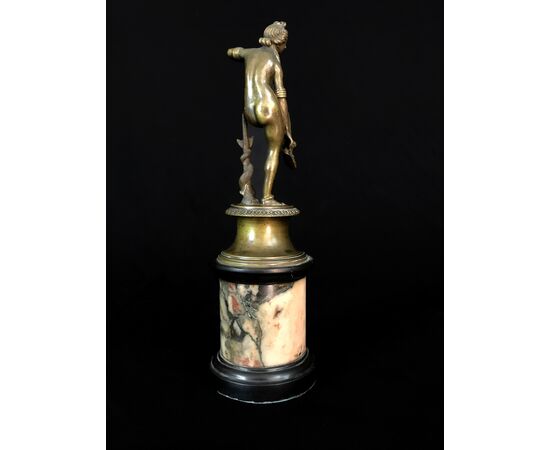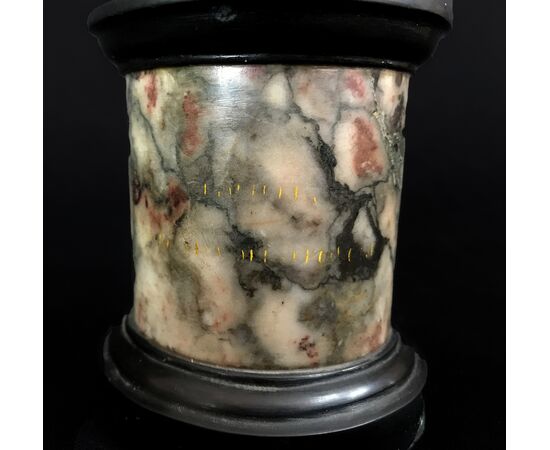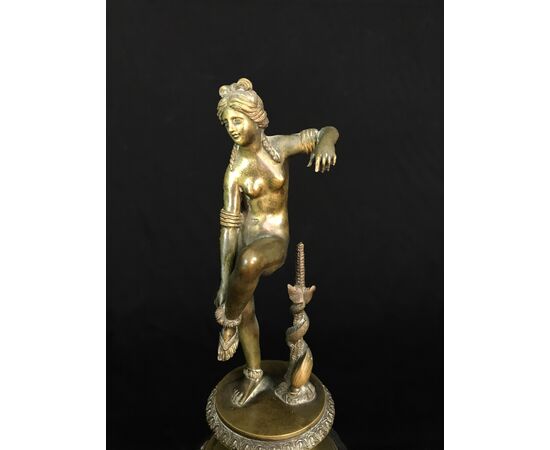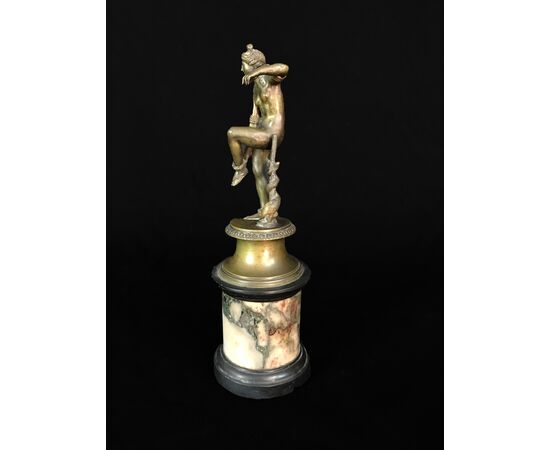Bronze sculpture depicting "Venus removing her sandal", Italy, late 18th century
Bronze sculpture depicting Venus removing her sandal, Italy, late 18th century.
Measurements: H 25.5 cm x diameter 8 cm
Price range: 2,500.00/2,800.00 euros
Object accompanied by a certificate of authenticity.
This bronze sculpture depicts Venus removing her sandal. Made in the Neoclassical period in Italy, it consists of the bronze sculpture of the Greek goddess Aphrodite, Venus for the Romans. The nude goddess, preparing for a bath, performs the very human gesture of unfastening a sandal.
The left arm, however, is raised, as if to compensate for the position by maintaining balance. Next to her, wrapped around a rocky spur, is a dolphin, an animal iconographically linked to the goddess due to her birth from the sea foam. The figure rests on a cylindrical and concave bronze base, with finely chiseled reserves. The bronze element, in turn, rests on an African marble cylinder with a base in black Belgian marble.
Venus is one of the major Roman goddesses mainly associated with eros and beauty. She is traditionally understood as the equivalent of the Greek goddess Aphrodite, goddess of beauty, physical and passionate love, among the major divinities of Olympus. Her birth is due to a dramatic event: Uranus, the Sky, is mutilated by his son Cronus, who punishes him for the wrongs inflicted on his mother. The torn limbs of Uranus fall into the sea and fertilize the foam of the waves of the island of Cyprus. Aphrodite emerges from the waves in all her splendor. From the 4th century onwards, Aphrodite began to be represented with more human and less heroic traits. Praxiteles with the "Aphrodite of Knidos", for the first time in the history of sculpture, depicts her nude, as she prepares to take a ritual bath.
From the Praxitelean model descend the Capitoline Venus (Capitoline Museums of Rome) and the Medici Venus (Uffizi Gallery in Florence) accompanied by Eros riding a dolphin. Also part of this strand is a subject frequently attested in the Hellenistic and then Roman age, with examples in bronze, marble and terracotta: the "Aphrodite fastening her sandal".
The fortune that this type of depiction had in the following centuries is demonstrated by the vast number of sculptures that represent it. In this bronze work, the goddess resumes the position of the Nude Venus of Oplontis: here Venus holds an apple in her left hand, a reminder of her victory in the beauty contest in which she prevailed over Minerva and Juno by the judgment of Paris. In our bronze instead, the hand seems to want to grasp the apple, which however has not been modeled. Perhaps the bronze is inspired by another work, such as the bronzes kept in the archaeological museum of Padua. Another example is the famous "Venus in bikini" found in Pompeii, so called because it depicts the goddess in the same pose, but with the breasts and hips covered by bands painted in gold. The dolphin depicted next to her could be inspired instead by the Medici Venus, while the hairstyle described is closer to that of the Capitoline Venus: a complex headdress with a high bow knot and strands falling on the shoulders.
This sculpture therefore confirms the interest in the neoclassical era in the works of the Hellenistic and Roman age, which were sometimes reinterpreted by the authors taking inspiration from various ancient examples.
Very decorative and of pleasant workmanship, it proposes a subject still very appreciated today: Venus continues to be considered a goddess of good omen, protector of falling in love and marriage.

